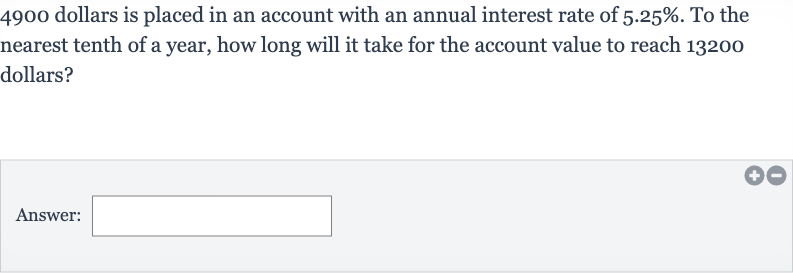Full solution
Q. dollars is placed in an account with an annual interest rate of . To the nearest tenth of a year, how long will it take for the account value to reach dollars?Answer:
- Identify Formula: Identify the formula to use for compound interest.The formula for compound interest is , where: is the amount of money accumulated after years, including interest. is the principal amount (the initial amount of money). is the annual interest rate (decimal). is the number of times that interest is compounded per year. is the time the money is invested for, in years.Since the problem does not specify how often the interest is compounded, we will assume it is compounded annually, so .
- Set Up Equation: Set up the equation with the given values.We need to find when , , (or as a decimal), and .
- Simplify Equation: Simplify the equation.
- Isolate Exponential Part: Divide both sides by to isolate the exponential part of the equation.
- Take Natural Logarithm: Take the natural logarithm of both sides to solve for .
- Calculate Value of t: Calculate the value of .
- Round Answer: Round the answer to the nearest tenth of a year. years
More problems from Exponential growth and decay: word problems
QuestionGet tutor help
QuestionGet tutor help
QuestionGet tutor help
QuestionGet tutor help
QuestionGet tutor help
QuestionGet tutor help
QuestionGet tutor help
QuestionGet tutor help
QuestionGet tutor help



